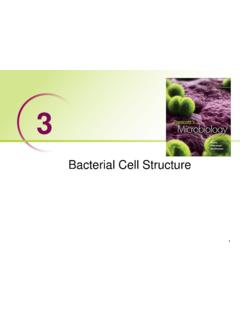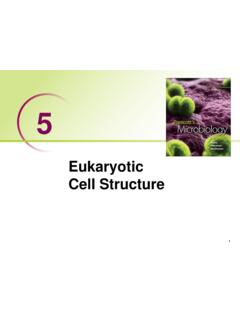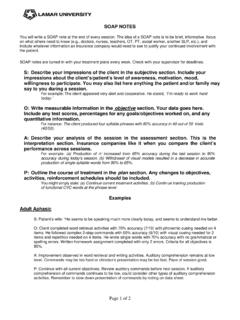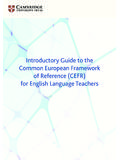Transcription of Chapter 7 Teaching Reading Comprehension
1 Chapter 7 Teaching Reading ComprehensionTeacher KnowledgeClassroom AssessmentEvidence-Based Teaching PracticesResponse to Intervention (RTI)What Is Reading Comprehension ?Assessing Reading ComprehensionWhat Are the Most Effective Ways to Teach Reading Comprehension ?Response to Intervention: Meeting Diverse Needs for Tiers 1 and 2 in Comprehension InstructionSchema theoryConstruction-integration theoryMultiple Comprehension strategiesBenchmark standardsMetacognitionStory grammarUnaided recallContent approachesVisualizingText featuresScaffoldingInputTeaching modelingGuided practiceHigher-order thinkingQuestion Answer Relationships (QARs)Questioning the authorElaborative interrogationFix-up strategiesPARISR eciprocal Teaching (RT)Dialogic teachingReader response What is Reading Comprehension , and what does research say about Reading Comprehension instruction? How is Reading Comprehension assessed effectively? What are evidence-based instructional practices or strategies for developing Reading Comprehension ?
2 How can Tier 1 and Tier 2 Comprehension instruction be adapted to meet the needs of diverse learners including English learners (ELs)? How can literature circles play a role in improving motivation to learn Comprehension skills? How are some ways that the Internet can be used to support Comprehension instruction? How can families and communities support children s Reading Comprehension development?Motivation and EngagementTechnology and New LiteraciesFamily and Community ConnectionsMotivation and Engagement Strategies for Teaching Reading ComprehensionTechnology and New Literacies: Internet Reciprocal TeachingFamily and Community Connections That Enhance Students Reading Comprehension258 Chapter 7 Teaching Reading ComprehensionSince the beginning of the school year, Ms. Dewey has taught seven Comprehension strategies to her students. She has taught these strategies one at a time, using clear explanations and think-aloud modeling, and has scaffolded her instruction so each student can use the strategies the winter holiday break, Ms.
3 Dewey decides to teach her second graders how to use the seven Reading Comprehension strategies in combination as a strategy family. To start this process, she produces seven posters, one for each strategy in the set of seven. She refers to these posters when she models for her students how to select Comprehension strategies and use them during Reading . Her posters are shown in the photo at the bottom of the Dewey loves to read science books with her students, especially big books. And her students particularly enjoy Reading science big books and participating in lessons using the family of seven Comprehension strategies. For example, one day while videotaping a lesson for later review, Ms. Dewey records one little boy, Juan, saying enthusiastically, I just love this stuff! The class is Reading a book about different has taken several years for Ms. Dewey to reshape Comprehension instruction in her classroom and to see students achieve on much higher levels.
4 In fact, she is always making adjustments to her Teaching as she learns more about Comprehension instruction and, most importantly, her students. As she listens to Juan s excited pronouncement, she echoes it, whispering to herself, I love this stuff, too! Breakthroughs to ComprehensionCredit to come259 What Is Reading Comprehension ? Comprehension is the very heart and soul of Reading . Although learning to trans-late letters into words is extremely important, understanding the author s message is what it s all about. From the very beginning, teachers help students construct mean-ing from print. But what is it that teachers like Ms. Dewey know that helps them develop good comprehenders in their classrooms?Teacher KnowledgeWhat Is Reading Comprehension ?Early in the twenty-fi rst century, Reading Comprehension research was summarized by two blue ribbon groups: the National Reading Panel (2000) and the RAND Reading Study Group (2002).
5 The National Reading Panel (NRP) described Reading Comprehension thus: Comprehension is a complex process .. often viewed as the essence of Reading . Read-ing Comprehension is .. intentional thinking during which meaning is constructed through interactions between text and reader.. The content of meaning is infl uenced by the text and by the reader s prior knowledge and experience that are brought to bear on it. (pp. 4 5)Similarly, the RAND Reading Study Group (2002) noted that Reading comprehen-sion involves four components: (1) the reader, (2) the text, (3) the activity, and (4) the situational context (p. 1). The fi rst three essential components the reader, the text, and the task occur within the fourth component of Reading Comprehension the situational context. The reader is the one doing the comprehending, and the text is the Reading material ( , stories, nonfi ction selections, etc.). The activity refers to what kind of Comprehension task, skill, strategy, or concept the reader is attempting to perform ( , discovering the author s main idea, understanding a sequence of events, thinking about a character s intent in a story, etc).
6 The situational context of Reading Comprehension can be thought of in at least two ways. First, the actual setting where Reading occurs at home, in a school class-room, the library, under a blanket at bedtime, and so on affects how well one comprehends while Reading . There is little doubt that children s Reading comprehen-sion is infl uenced by the setting in which they read. (Aren t you more focused and relaxed when Reading alone at home than if called on to read during a college class?) Second, there is a social context associated with Reading Comprehension . In some cases, Reading Comprehension occurs individually, alone a very limited social set-ting. In other cases, however, Reading Comprehension can be part of a vibrant social activity in which people teachers, parents, and children read a text together and jointly construct meaning through discussion. Lively interaction about a text in the company of others seems to be the optimal situational context to enhance students Reading Comprehension (McKeown, Beck, & Blake, 2009).
7 Less Is More in Comprehension InstructionDewitz, Jones, and Leahy (2009) found that commercial Reading programs used by most school districts are not very effective in Teaching Reading Comprehension . Such core Reading programs must be used selectively and supplemented by a knowl-edgeable teacher if children are to reach their potential. For example, the National IRA Standardsfor ReadingProfessionals:Standard 1, Elements , Core Standards: Reading : K 5, Key Ideas and Details (items 1 3), Craft and Structure (items 4, 5), Integration of Knowledge and Ideas (items 7 9), Range of Reading and Level of Text Complexity (item 10); Reading : Grades 6 12, Key Ideas and Details (items 1 3), Craft and Structure (items 4 6), Integration of Knowledge and Ideas (items 7 9), Range of Reading and Level of Text Complexity (item 10)Response to Intervention: Expertise260 Chapter 7 Teaching Reading ComprehensionReading Panel (2000) recommends that teachers primarily focus on seven specifi c Comprehension strategies supported by rigorous research (plus multiple-strategy in-struction) whereas other researchers ( , Dymock & Nicholson, 2010) feel fi ve is the magic number of strategies for intensive focus.
8 But the curricula found in leading core Reading programs today cover skills and strategies varying from 18 to 29 per program per year! Not only is this unnecessary and ineffective, but the large num-bers of skills and strategies taught in core Reading programs means all get superfi cial treatment, often at a rate of one skill a week (Dewitz et al., 2009). As Dewitz and colleagues state:Our analysis of Comprehension instruction in core Reading programs demonstrates several shortcomings that may undermine their effi cacy. First, the Comprehension skills and strategies curricula are wide but not terribly deep. The structure of the curricula is often incoherent so that students and teachers do not know how skills and strategies relate to one another or how acquiring these sets of skills leads to becoming a better reader. (p. 120)Later in this Chapter s Pillar Three section, we review ways you can take control and supplement your core Reading program to produce effective Comprehension instruc-tion for your Do Children Develop Reading Comprehension ?
9 Research over the past 30 years has contributed greatly to our understanding of the thinking processes involved in Reading Comprehension . Surprisingly, however, little research has focused on the development of young children s Comprehension (Re-utzel, Smith, & Fawson, 2005).Pressley (2000) describes the development of Reading Comprehension as a two-stage process, beginning with lower processes focused at the word level such as word recognition (phonics, sight words), fl uency (rate, accuracy, and expression), and vocabulary (word meanings). The second stage of Reading Comprehension devel-opment focuses on higher-order thinking relating prior knowledge to text content and consciously learning, selecting, and controlling the use of several cognitive strat-egies for remembering and learning from Theory. Reading Comprehension research over the years has been pro-foundly infl uenced by schema theory, a hypothesis that explains how information we have stored in our minds helps us gain new knowledge.
10 The term schema (the plural is schemata or schemas) can be defi ned as a kind of storage cabinet in our brains with fi le folders containing different information about (1) concepts (chairs, birds, ships), (2) events (weddings, birthdays, school experiences), (3) emotions (anger, frustration, joy, pleasure), and (4) roles (parent, judge, teacher) drawn from our life experiences (Anderson & Pearson, 1984; Rumelhart, 1981). Researchers often think of our schemas as neural networks ( , brain networks ) of connected meanings (Collins & Quillian, 1969; Lindsay & Norman, 1977). Each schema is connected to other related schemas, forming a vast, interconnected network of knowledge and ex-periences. The size and content of an individual s schemas are infl uenced by personal experiences, both direct and vicarious. Therefore, younger children typically possess fewer, less well-developed schemas about a great many things than do mature adults.










